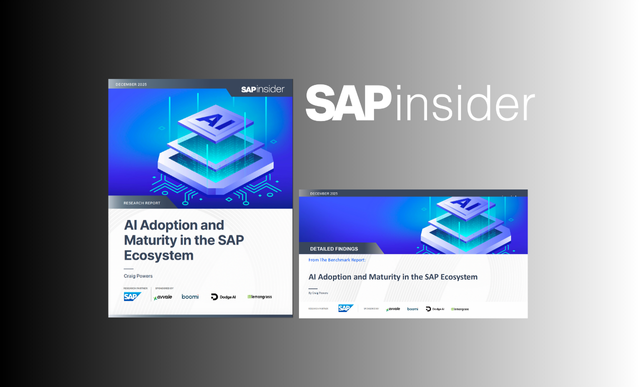Edge Intelligence: Transforming Industries with Intel & SAP’s AI Technologies
Meet the Authors
Key Takeaways
AI with edge computing is one of the most promising advancements, moving artificial intelligence from the data center to the point of data origin, offering real-time insights and significantly influencing real-world outcomes. This enhances support for real-time insights, automation, agility, and other transformative capabilities.
Despite these advantages, several complexities can make the adoption of AI-enabled edge computing challenging. These include developing high ROI edge AI solutions tailored to specific industry demands, navigating diverse hardware requirements and software ecosystems, and managing the high data volumes needed for AI with minimal latency.
Intel and SAP have a long history of collaboration and co-innovation which has led to the development of advanced solutions like the optimization of SAP HANA on Intel® architecture and with data-centric innovations optimizing Intel platforms for SAP enterprise software applications.
Organizations are rapidly embracing edge computing to navigate a data-driven landscape where speed, efficiency, and reliability are crucial. AI with edge computing is one of the most promising advancements, moving artificial intelligence from the data center to the point of data origin, offering real-time insights and significantly influencing real-world outcomes. This enhances support for real-time insights, automation, agility, and other transformative capabilities. To innovate and overcome modern day challenges, many are integrating AI into their edge computing strategies, unlocking a range of benefits:
- Real-Time Decision Making: AI enables immediate data processing and decision making at the source.
- Improved Customer Experience: Retail and service industries can use edge AI to provide personalized experiences and services.
- Enhanced Data Security: By processing sensitive data locally with AI, the need to transmit it over the network is reduced, minimizing the risk of data breaches.
- Remote Monitoring and Control: In utilities, agriculture and manufacturing, edge AI enables remote monitoring of equipment and can detect security risks as well as predict maintenance needs.
- Bandwidth Management and Efficiency: AI can intelligently manage network traffic at the edge, prioritizing data flow and reducing the load on core networks. Crucial for telecom and internet service providers.
Despite these advantages, several complexities can make the adoption of AI-enabled edge computing challenging. These include developing high ROI edge AI solutions tailored to specific industry demands, navigating diverse hardware requirements and software ecosystems, and managing the high data volumes needed for AI with minimal latency.
Moreover, the management of numerous distributed edge devices and applications at scale adds to the complexity. Edge computing use cases demand advanced networking and AI analytics to meet critical real-time needs. Often, these setups use a hybrid AI model that combines local and cloud processing to handle global deployment effectively. However, custom solutions to these challenges, typically built on closed systems with specialized hardware, make existing systems integration and expansion of new use cases costly and time-consuming.
Explore related questions
AI-enabled Edge Technology with Intel & SAP
Intel and SAP have a long history of collaboration and co-innovation. This collaboration has led to the development of advanced solutions like the optimization of SAP HANA on Intel® architecture and with data-centric innovations optimizing Intel platforms for SAP enterprise software applications—whether deployed on premises, in the cloud, or at the edge. Enterprises can leverage the powerful SAP HANA in-memory database running on high-performing Intel® Xeon® Scalable processors providing real-time insights. Additionally, Intel and SAP have been delving deeper to address real world challenges and are helping Utilities and Healthcare organizations adopt and develop tailored edge AI solutions.
Utilities: Keeping Substations Secure and Operational
For energy and utility companies, these edge computing challenges often multiply. For example, the U.S. electrical grid is heavily reliant on over 79,000 substations, many of which are situated in remote areas far from maintenance teams and are accessible only to authorized personnel. These facilities face continuous operational challenges and an increasing range of security threats, including both physical and cyberattacks. Such attacks result in prolonged outages and significant damage to vital infrastructure.
AI-Driven Substation Protection, Built on Intel’s Tiber Edge Platform
Intel and SAP’s latest ‘Threat Sense at the Edge’, solution enhances security and provides deeper operational insights for utility substations. This as-a-service solution uses AI to analyze large volumes of data to identify threats and contextualize them, and leverages SAP’s Digital Core and Intel’s Tiber Edge Platform to manage data processing at the edge, close to where data is generated, which accelerates insight generation and reduces refactoring costs. The platform operates on standard hardware and integrates with SAP’s S/4 HANA ERP suite, allowing real-time data processing and analytics.
Using SAP tools and standard hardware, the platform accelerates data processing and ensures compliance and security without sacrificing flexibility or cost-effectiveness. It employs Intel’s OpenVINO toolkit to enhance AI performance, thereby improving application speed, accuracy, and energy efficiency. The platform allows utilities to customize and easily manage application deployment, adapting to new threats or regulations.
For substation operations, Threat Sense builds on existing layered security solutions leveraging AI to interpret incoming data distinguishing threats from day-to-day activities, providing actionable insights through a dashboard. This enables operational staff to swiftly respond to incidents from equipment malfunctions to coordinated attacks, enhancing security and efficiency. The system supports easy integration on standard hardware and offers flexible and secure operations with streamlined lifecycle management, facilitating adjustments based on evolving policies or geographic needs. This integrated approach not only enhances operational insights but also connects cloud services to edge devices, optimizing utility operations across various locations.
A Digital Revolution in Pathology
In healthcare, Intel and SAP are collaborating to advance medical breakthroughs with faster results for better patient care. Integrating Intel’s technological advancements in federated learning and inference computing with SAP’s robust healthcare solutions has set new standards for innovation in cancer treatment and has the potential to transform healthcare into a more proactive, integrated, and personalized system.
Today’s healthcare information landscape presents several challenges:
- Complexity of therapeutic selection: Considering the upwards of 100 target therapies in over a dozen modalities in the context of combinations and permutations – clinical decision-making and selection is beyond the capability of an individual oncologist. This creates an information problem when the goal of precision medicine is to deliver the right medicine to the right patient at the right time.
- Complexity of technology landscape: HIPAA requirements for patient privacy have created a challenging information technology landscape due to the information being very siloed and unstructured.
So, how do we deploy all of the new information technologies – data analysis, LLMs and security – so healthcare professionals and patients can readily access molecular profiles, creating a faster path to less toxic, targeted therapies? How do we bring the technology to the data lakes while allowing data sovereignty – ensuring data ownership and enabling security – all while reducing the cost and complexity required to doing it at scale?
Intel and SAP’s strategic collaboration operationalizes precision medicine insights to enhance patient outcomes and reduce medical costs. The collaboration offers a secure, federated data approach, accelerating the processing of confidential patient genomic data while upholding stringent security and compliance standards.
The larger the foundational models in AI, the more accurate and robust the results. If you are a patient with cancer today, you want the pathology group assessing your tissues for diagnosis using large foundational model AI based applications. Access to this data will raise the level of that pathologist enormously, because these AI-based applications are pulling from a knowledge base that could be astronomical in size and from many different sources. In turn, that accurate diagnosis will follow that patient through to their treatment choices based on outcomes of non-siloed, robust data sets. It also addresses healthcare equity issues in that you would no longer have to fly across the country to a well-known cancer care center. You could get that level of care closer to home, which is where you want to be if you need treatment for cancer.






